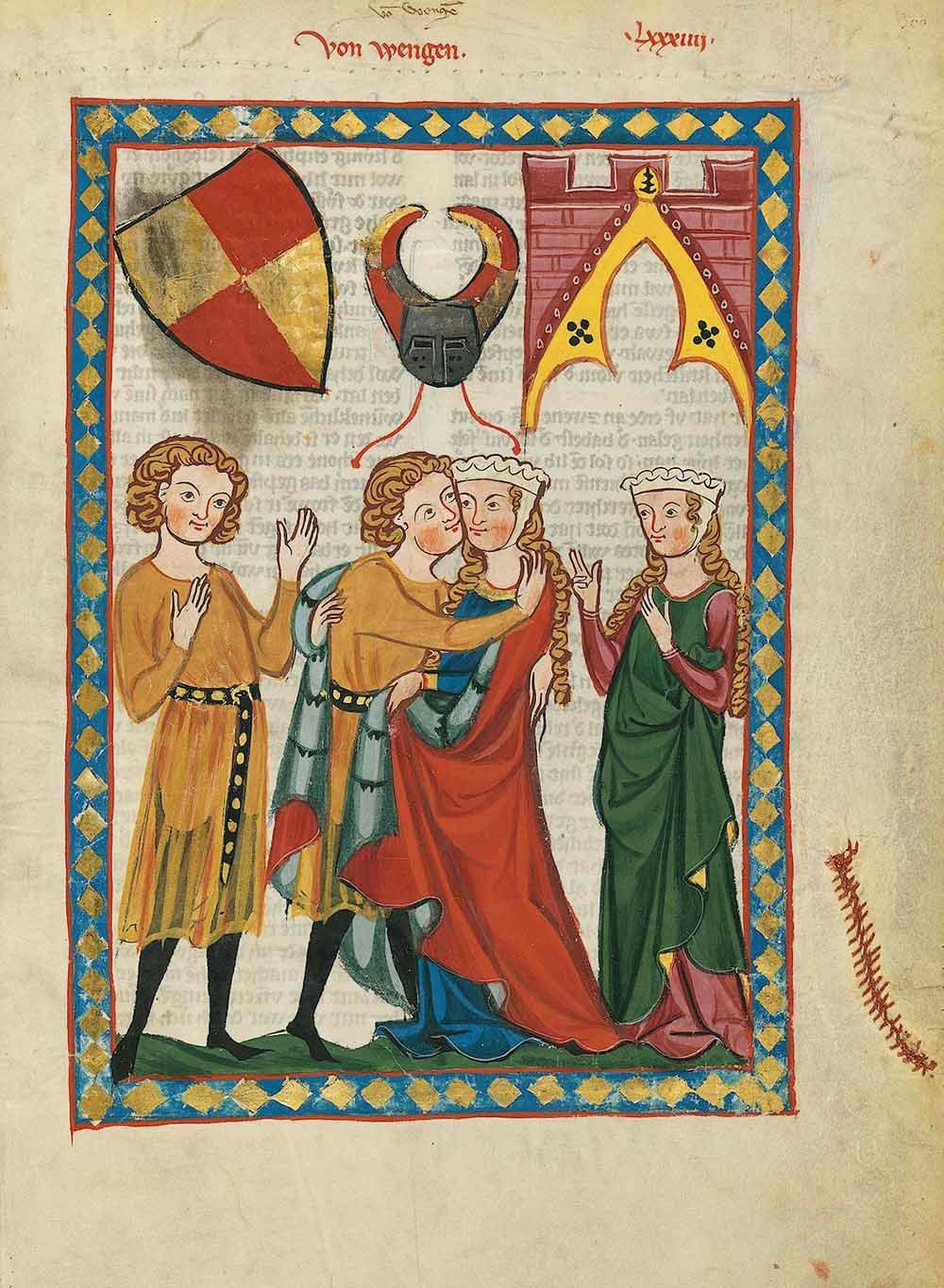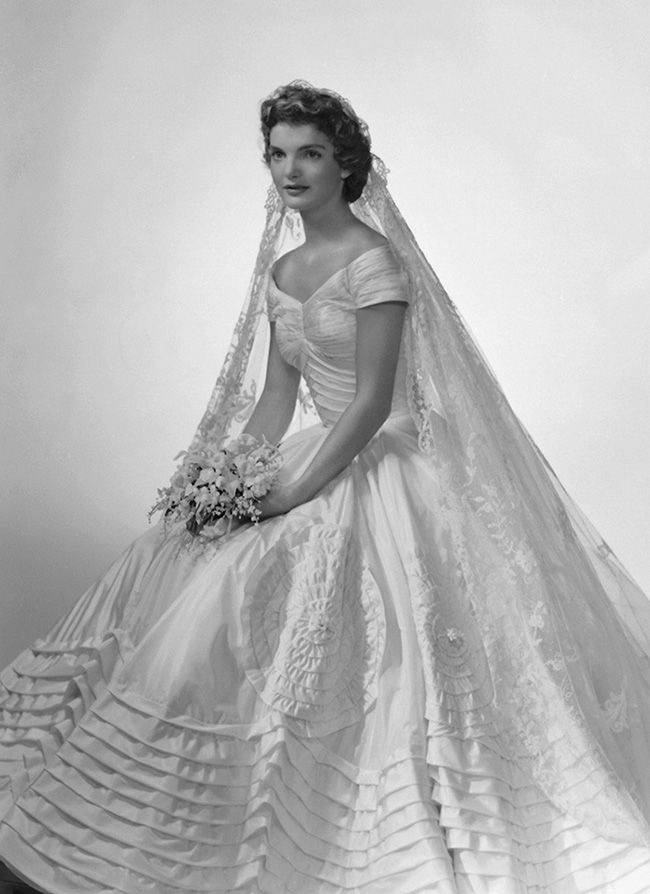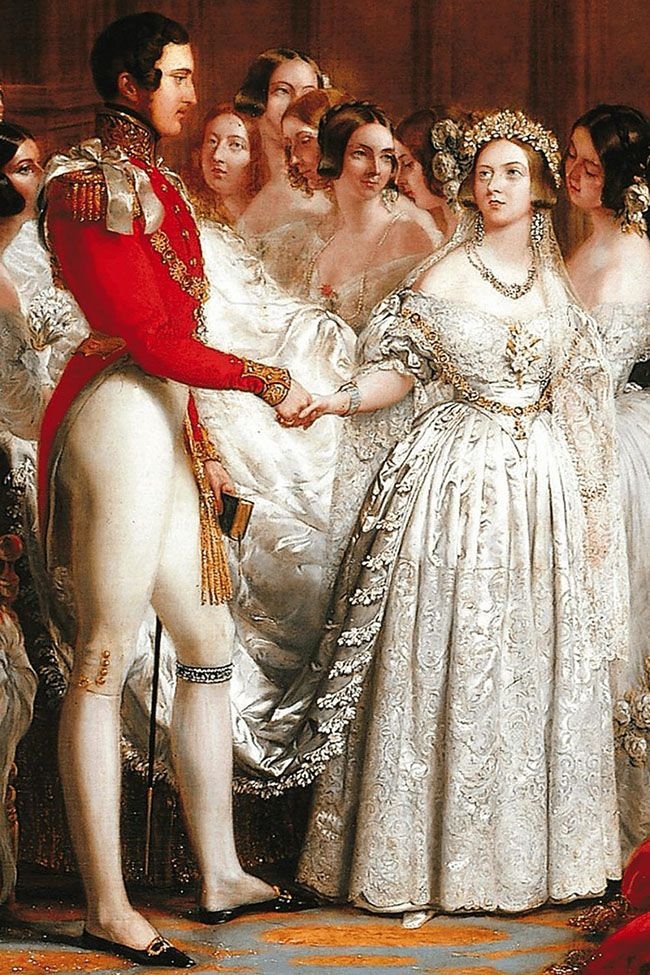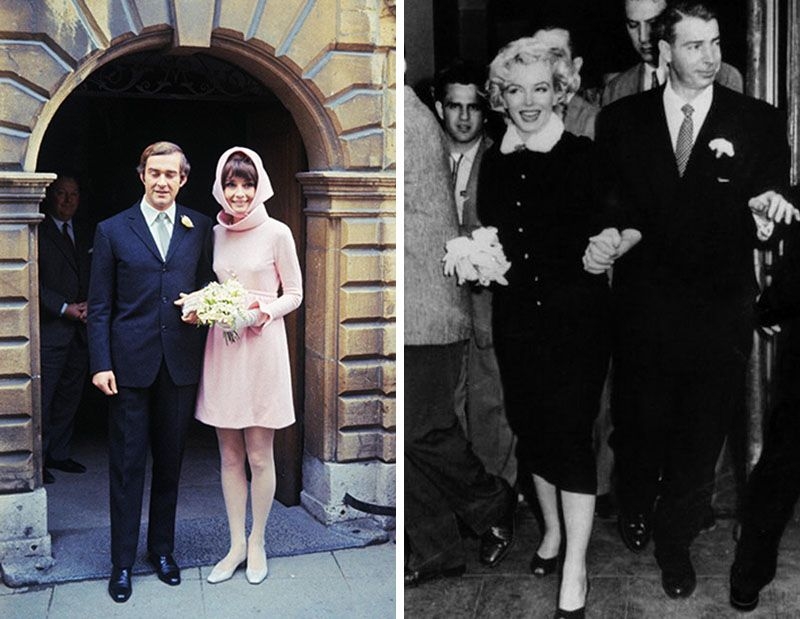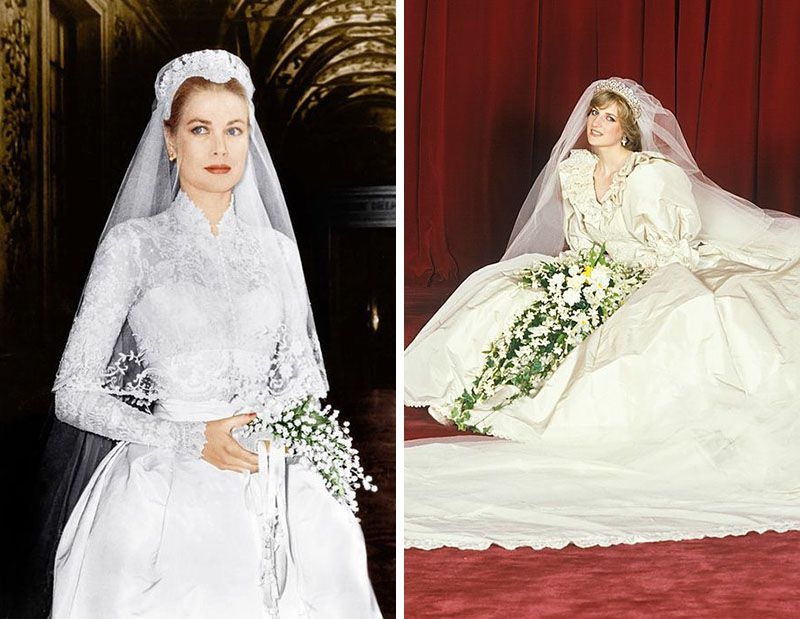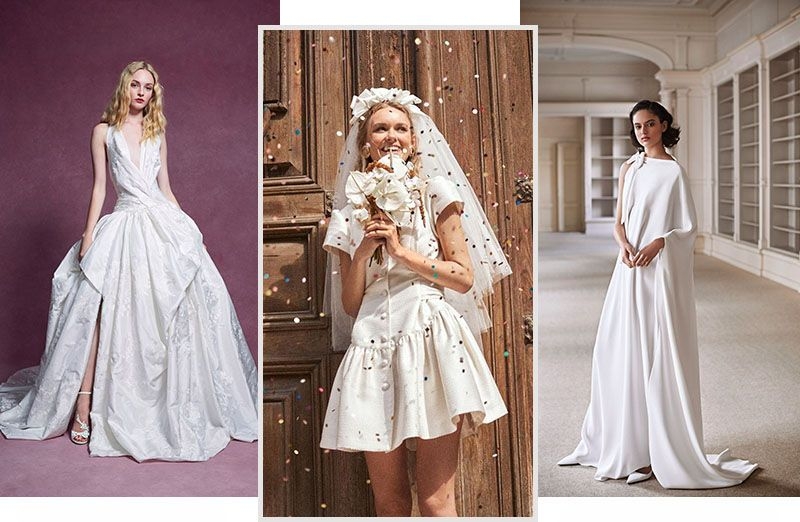The history of fashion is full of curious chapters such as the evolution of a wedding dress. As the more intimate ceremonies begin to trend over lavish celebrations, classic wedding accessories also give way to a more bohemian style. Yet, one thing remains – a bride’s snow-white outfit.
White, and the many shades of white, has been a favourite choice for a wedding dress for countless decades. It is then all the more surprising to discover that this has not always been the case. As the tastes, beliefs and morals fluctuated over time, so did the style, cut and colour of the bridal garments. We will be looking back at some of the most memorable bridal looks, which will forever remain embedded in the history of wedding fashion.
How it all began
The origins of the European wedding dress are rightfully tied to ancient Greece. The Hellenic tradition saw white as the colour of youth, humility and innocence, which is why it the go-to colour for a bride and groom. But there was not much choice in terms of the cut. Traditionally young women wore peplos, a long light dress secured at the shoulders. Jewellery was limited to a mere laurel wreath, which symbolised chastity.
The bridal attire of ancient Roman women was even more austere. Think Juno, the goddess of family and motherhood. A woman’s head was covered with a scarlet fabric, which made the skin look as pale as the marble of Roman statues to maximise the resemblance.
Medieval bridal dress
The wedding fashion of the Middle Ages took an altogether different turn. Before Romanticism with its wandering knights in shining armour took over, a wedding ritual was not at all seen as a union of two lovers. If anything, it was more of a business transaction. The bridal dress of the time reflected this thinking, being much more tailored to highlighting her social and financial status than her beauty.
Purple and red colours were commonplace as symbols of wealth. But it was not so much the colour as the material and finish that were important. Eligible brides dressed in furs, brocade and velvet. A cotehardie, or kirtle, with a high waist and long sleeves was the most fashionable style at the time.
But when it comes to medieval depictions of brides, it is not the dress itself or even the cone-shaped headdress which floated above their heads like a Gothic tower (the so-called hennin), but a woman’s noticeably bulging belly that grabs the attention. Does this mean that weddings used to take place after a child was conceived? Not at all. It is just that pregnancy was fashionable. Many medieval fashionistas possessed a portable belly to stay on top of the pad fad.
Centuries-old traditions
The medieval tradition of wearing not just your best clothes but also new ones made especially for the occasion, remains to this day. A bride’s dress was designed to become a part of her dowry, which was an essential part of the wedding exchange. Women from poorer families would spend years making it, decorating it with elaborate embroidery.
It was not looked down upon at the time to wear the same bridal outfit to other festivities. This made white not the most popular colour, given how impractical it can be.
It is worth mentioning another important element of a bridal gown, which has remained unchanged for the past 2,000 years. Have you guessed it? With the spread of Christianity, a bridal veil became a ubiquitous accessory. While its shape and length varied depending on the country, era and fashion, its sacred meaning has remained universal throughout the centuries.
In Europe a veil symbolised innocence and virginity, in ancient Russia it was also considered a powerful talisman to ward off evil spirits. The translucent veil that we all know today appeared in the 18th century, with bright scarves or other types of fabric being commonplace beforehand.
White is back in vogue
The renewed interest in antiquity which defined the beginning of the Renaissance was not only seen in the artistic tendencies of the time. It also brought back the fashion for white wedding gowns. The antique marble statues, which were discovered duration excavations, very much set the trends for colour, style (A-line silhouette and lack of corset) as well as fabric, which was usually flowing and translucent. One of the first brides to brave a white outfit at the time was Mary, Queen of Scots, in 1559.
It was a satin dress embroidered with pearls. He shoulders were covered with a mantle decorated with precious stones. As was expected of her status, a veil was replaced with a golden crown decorated with diamonds, emeralds and rubies. A little later on, in 1572, the nineteen-year-old Queen of France Margaret of Valois also wore a light-coloured dress. She dedicated several lines to describing the dress in her Memoires: “I wore a regal attire with a crown and an ermine cloak which covered my shoulders, sparkling all around with the reflections of my crown’s jewels.”
But it was Queen Victoria who truly set the trend for a white wedding dress. It was only with her appearance in a puffy cream-white dress made of Spitalfields satin before her groom on the 10th of February 1840 at Chapel Royal, St. James’s Palace, that the colour became a benchmark for weddings. The Queen’s gown was decorated with lace flounces on the neck and sleeves and a five-metre-long train. This is still the gold standard of wedding dresses today.
The popularity of a white dress in Europe is partially tied to the Christian tradition which associated white with chastity. However, the bridal fashion of the 19th-20th centuries was also influenced by the more everyday factors. The invention of white soap (soap was typically brown before the 20th century) helped seal the association of this colour with hygiene and health. The emergence of photography also had its say. A light dress simply looked better in black and white photos than any other colours.
The wedding dress of the 20th century
When it comes to wedding fashion, the 20th century was truly experimental. The choices are increasingly dictated by the everyday trends. Brides ditch corsets, long trains and heavy elements. A ground-breaking contribution to wedding dress fashion is attributed to Coco Chanel who shortened a traditional dress to knee length.
Fashionistas would typically complement this kind of outfit with a playful hat rather than a veil. Audrey Hepburn’s pastel pink mini dress, Bianca Jagger’s wedding tuxedo and Marilyn Monroe’s dark button-down dress are just some of the examples which will be remembered for their experimental takes on wedding fashion.
On the other hand there is the continued tradition of princess dresses with an opulent crinoline, inlaid bodice and tight-fitting busts. The standards are typically set by royal celebrations. What comes to mind is Grace Kelly’s marriage to Prince Rainier III of Monaco and Diana Spencer’s wedding ceremony with the Prince of Wales.
Grace’s elegant dress created by Metro-Goldwyn-Mayer’s costume designer Helen Rose, used up 23 meters of silk, 90 meters of tulle and 275 metres of lace. Lady Diana dazzled her guests with an 8-meter-long train and a ruffled collar. Romantic dresses with puff sleeves, frills and bows were in popular demand at wedding dress boutiques for a while after.
Today’s wedding dress trends
Designers continue their attempts at reinventing the classic wedding dress by changing the shape of the skirt, adding more layers, sophisticated draping and even feathers. The wedding collections of 2021 feature as much elegance and femininity as a touch of carelessness and wit.
As for the colours, foaming white seems to have given way to a whole palette of different shades to suit a bride’s skin tone and a wedding ceremony’s overall colour scheme. From beige and nudes to ashy pinks and stylish greys. There are increasingly more options in complex colour palettes with an ombré effect and contrasting combinations.
Floral appliqués, silk combo dresses, boho style outfits, miniskirts and dazzling white jumpsuits, you name it. The variety of trends seen at the annual Bridal Fashion Week can be summarised as a tendency for individuality. It seems that the main aspiration of a bride today is to be herself and highlight her uniqueness. As for the dress itself, it can be anything from a puffy cloud or a sleek and sexy translucent gown. It is all down to the bride’s personal choice.

